-
Car Reviews
- All reviews
- Midsize SUVs
- Small cars
- Utes
- Small SUVs
- Large SUVs
- Large cars
- Sports SUVs
- Sports cars
- Vans
Latest reviews
- Car News
-
Car Comparisons
Latest comparisons
- Chasing Deals
The next Patrol impresses with a torquey twin-turbo V6, sweeter handling, and a well-built interior — but real-world fuel savings over the old V8 are slim

The new-generation Y63 Nissan Patrol won’t arrive in Australia until 2026 — but Chasing Cars has completed an early test of the new-gen four-wheel drive in the Middle East, where waitlists promptly formed after the Y63 went on-sale there in late 2024.
It’s less clear whether Australian buyers will share that same level of enthusiasm, particularly considering Nissan Australia’s recent sweetening of the outgoing Y62 by finally pairing its high-revving V8 with a more modern interior.

There’s no question the Y63’s cabin, ride and handling are all more contemporary, but the new-gen Patrol asks buyers to trade a charismatic V8 for a more powerful and torquey twin-turbo V6. It could also be more expensive, given it landed with a price increase in Middle Eastern markets.
Broadly, the shift from the V8-powered Y62 to the twin-turbo V6 Y63 mirrors Toyota’s 2021 transition from the 200 Series Land Cruiser to the 300 Series in Australia — though a key differentiator remains Nissan’s ongoing commitment to petrol over diesel.

Measuring 5205mm long, 2030mm wide and 1955mm high, the incoming Y63 Patrol is slightly larger than the outgoing version. Weight falls a whisker compared to some Y62 specs, but the new Nissan is longer and heavier than a Toyota Land Cruiser 300 Series.
Half the lifespan of the Y62 Patrol passed before Aussie buyers warmed to the petrol-powered 4WD, but warm they did — with an explosion in sales during the COVID pandemic. Nissan Australia will be hoping to maintain that momentum when the new model arrives.
Convincing loyal Patrol owners to switch to the Y63 will require demonstrating that the new 317kW/700Nm ‘VR35DDTT’ twin-turbo V6 is a worthy successor to the outgoing 5.6-litre naturally aspirated V8, which made 298kW/560Nm.
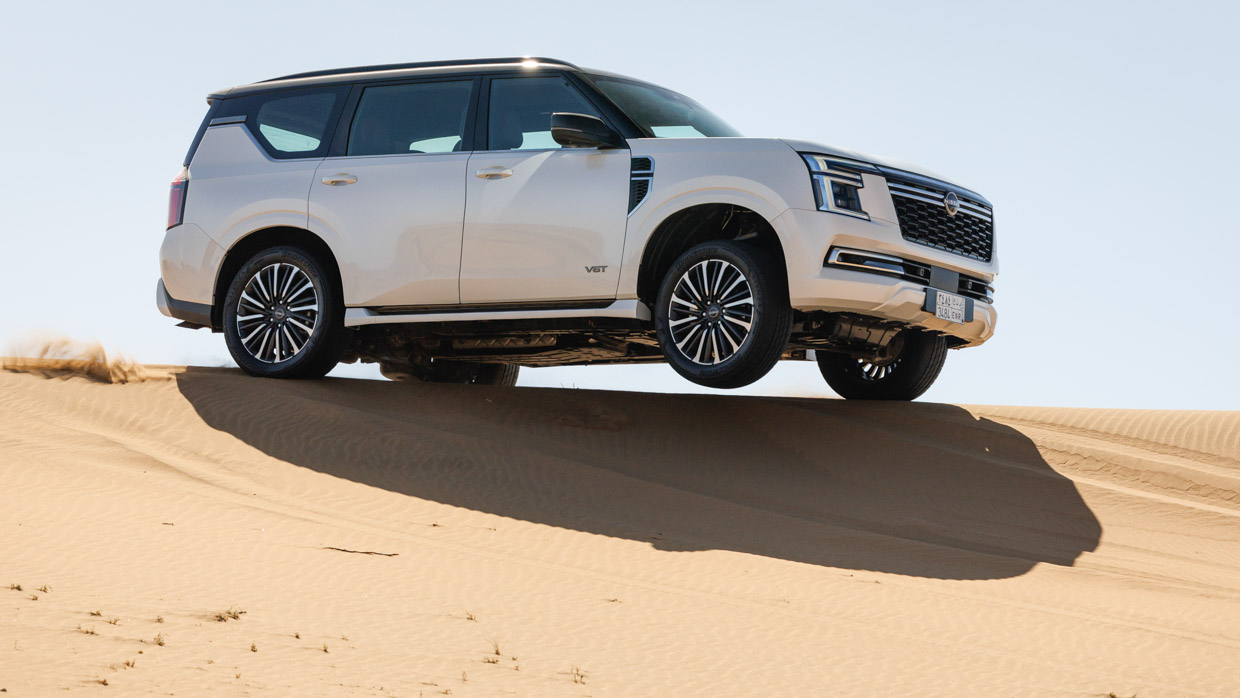
Maintaining the Patrol’s trademark value proposition will be key to the Y63’s local success. The Y62’s pricing ($90,600–$105,660 plus on-road costs) undercuts the Toyota LandCruiser 300 Series ($97,990–$146,910+ORCs). In effect, buyers can pick up a full-sized Patrol V8 for the price of a smaller four-cylinder Prado Kakadu ($99,990+ORCs).
Patrol pricing might increase in future. When Nissan launched the Y63 in Dubai, pricing rose by around 13 percent. If replicated in Australia, the Y63 Patrol could land between $100K and $120K — undercutting the full-size Land Cruiser, but with less of a buffer.
Nissan gave the Y62’s dashboard an unexpected upgrade earlier in 2025 — utilising leftover components from the 2021 overseas facelift — but the new Y63’s cabin is on another level.
Step up into the taller and longer new Patrol and you’ll find a thoroughly modern cabin that not only feels two generations newer than the Y62’s, but also noticeably fresher than the four-year-old interior of the pricey Land Cruiser 300 Series.
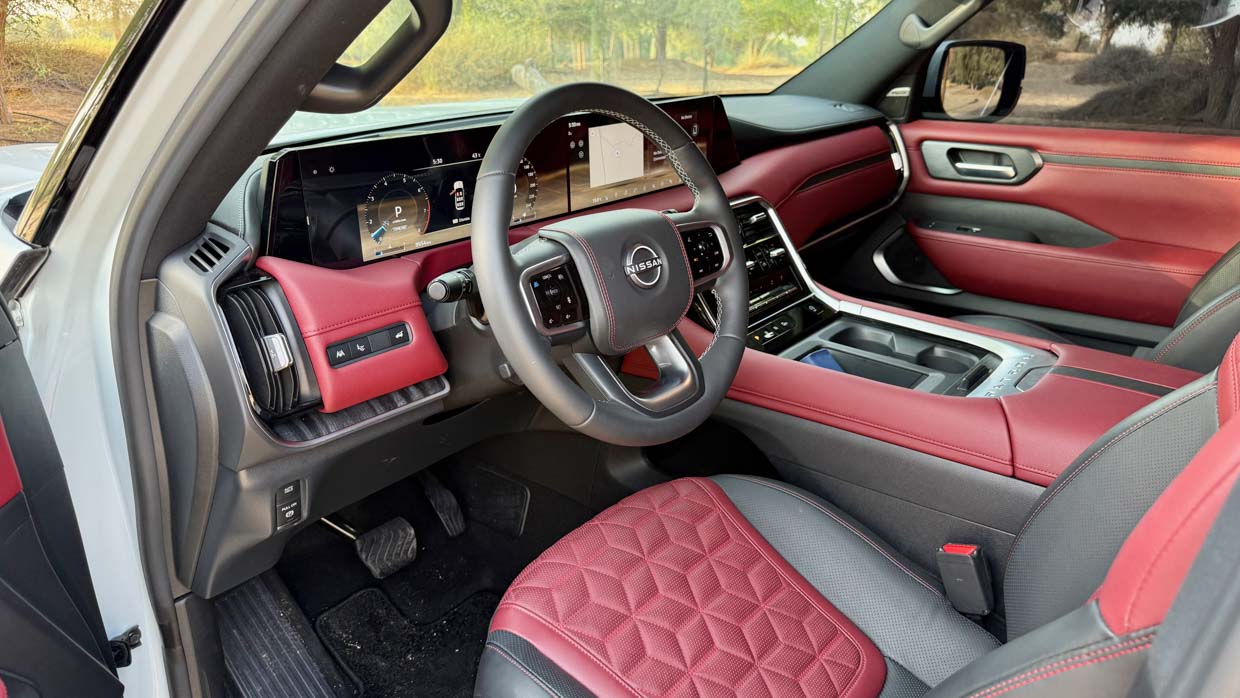
Much of the modern aesthetic stems from a contemporary, ultrawide 28.6-inch glass panel that integrates dual 14.3-inch displays atop soft dashboard padding, one a configurable instrument cluster and the other a touchscreen with wireless Apple CarPlay and Android Auto.
Particularly noticeable is the degree of quietude and isolation on the move, courtesy of acoustic glass — the Patrol is properly luxurious in that sense. Low NVH levels provide a quality sound-stage for the 12-speaker Klipsch premium stereo.
A side-by-side comparison of the Y62 and Y63 dashboards reveals a clear difference. The latest Patrol cabin is unified and modern. Mercifully, Nissan has retained physical controls for climate, volume, transfer case, locking rear differential, and drive mode controls.

Available in black, tan and burgundy colour schemes, the Y63’s interior proved ergonomic during our test. Key controls fell to hand, and the tech was simple to operate. Storage was generous, with oversized cupholders, deep door bins, and a cooled centre console.
Beyond smart aesthetics, we were impressed by the Y63’s cabin quality. Our tester had only clocked up 9000km but there were no creaks, squeaks or imperfections to report. Instead, a rather tightly assembled, solid-feeling cabin.

Material quality isn’t epically luxe — which is understandable given Nissan sells the Y63 in Infiniti QX80 format in export markets like the US and Middle East (but not Australia).
Still, the Y63 matches, and maybe exceeds, the Land Cruiser 300 Series for perceived expense — though some cheap parts-bin switches and stalks are noticeable.
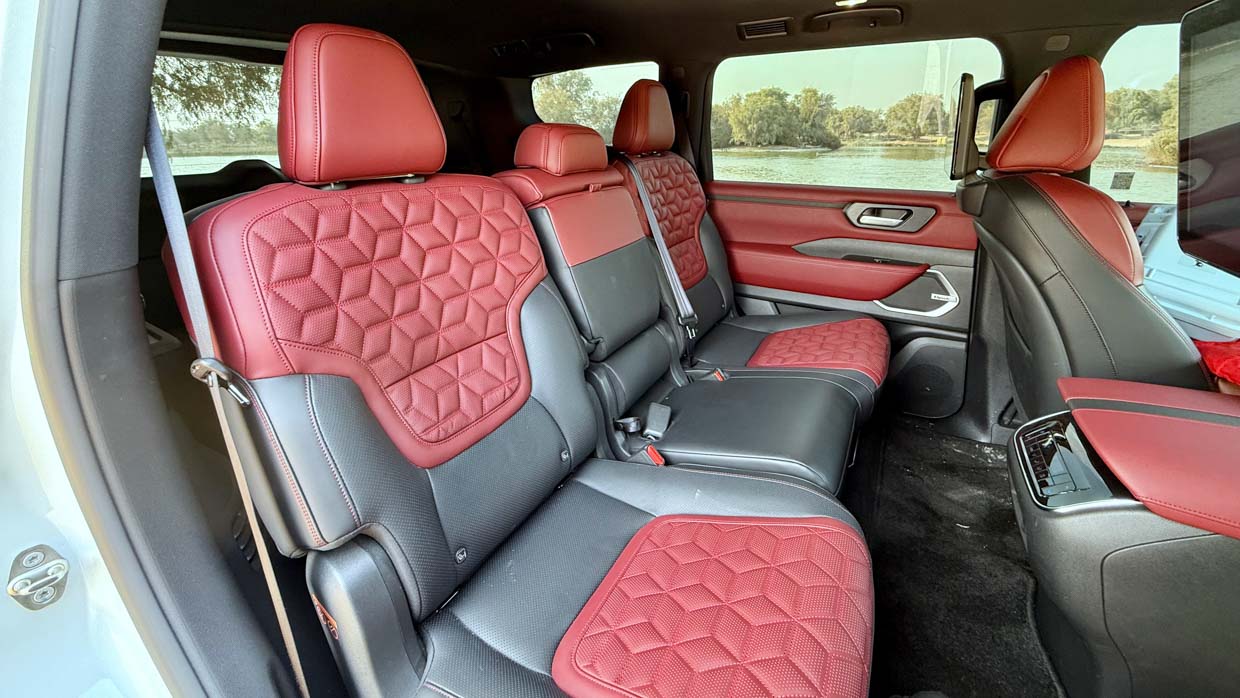
High-grade Patrol variants feature quilted genuine leather upholstery with heating, cooling, extensive power adjustment, and basic massage functionality. The front seats were firmer than expected, giving good support on long drives.
The second-row and power-folding third-row seating offer adequate space for adults, while globally, amenities include seat-back 12.8-inch entertainment screens, a fold-down armrest, and air conditioning vents stretching all the way to row three.
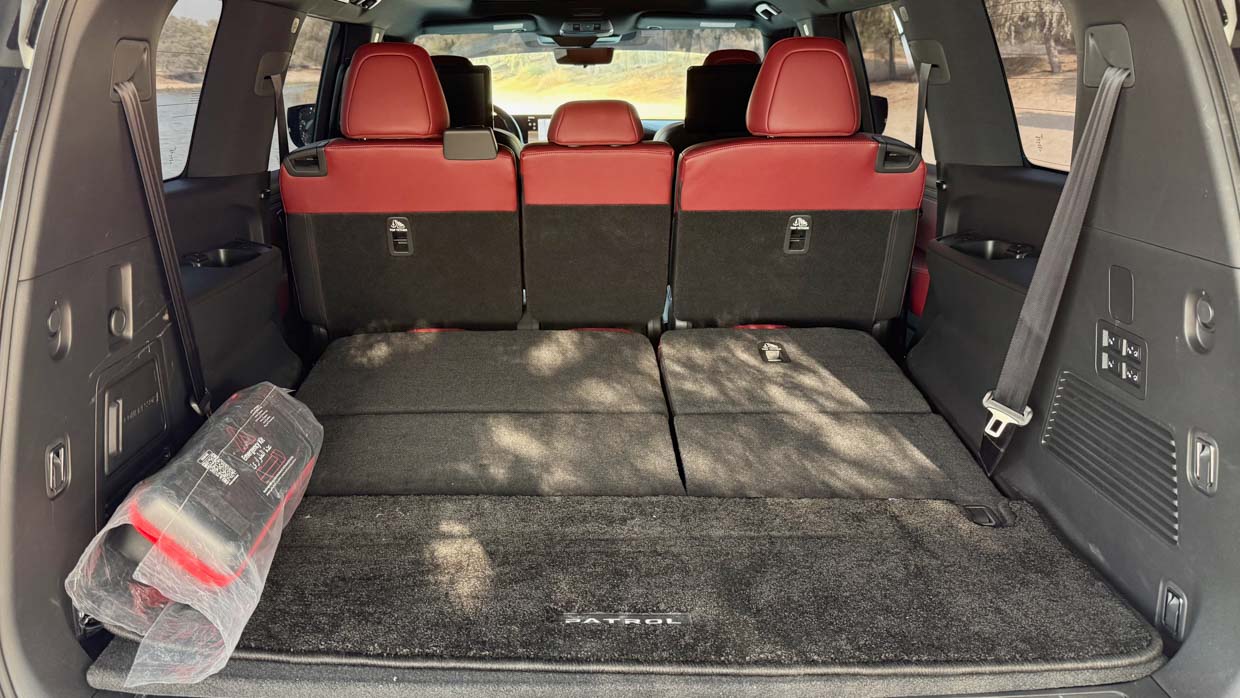

Boot space is adequate with eight seats up, but a flat-folded third row reveals vast cargo room in five-seat mode. In the UAE, the boot includes a handy in-built compressor and hose for remotely airing tyres, and a full-size alloy spare is underslung at the rear.
Our first drive across UAE highways, byways and traffic-clogged urban routes confirmed the Y63 is a more accomplished vehicle overall than the Y62 — though we did miss the outgoing model’s signature naturally aspirated V8 soundtrack at high revs.
In place of the 5.6-litre V8 is a muscular twin-turbo V6. An enlarged version of the VR engine sold in the Nissan Z sports coupe, the Y63 Patrol’s 3.5-litre engine produces 321kW/700Nm.
A cheaper 236kW/386Nm 3.8-litre non-turbo V6 sold in the Middle East is not likely for Australia.
While the V6’s power is comparable to the old V8, torque has jumped 25 percent to 700Nm. Better still, peak twist arrives 400rpm earlier — at 3600rpm — while a new nine-speed torque converter auto replaces a seven-speed, helping the V6 stay on-song.
These figures reveal a key difference in daily driving: the Y63’s twin-turbo V6 delivers more accessible torque at lower revs, making the Patrol feel more refined and immediately energetic in everyday situations, like pulling away from traffic lights or overtaking.
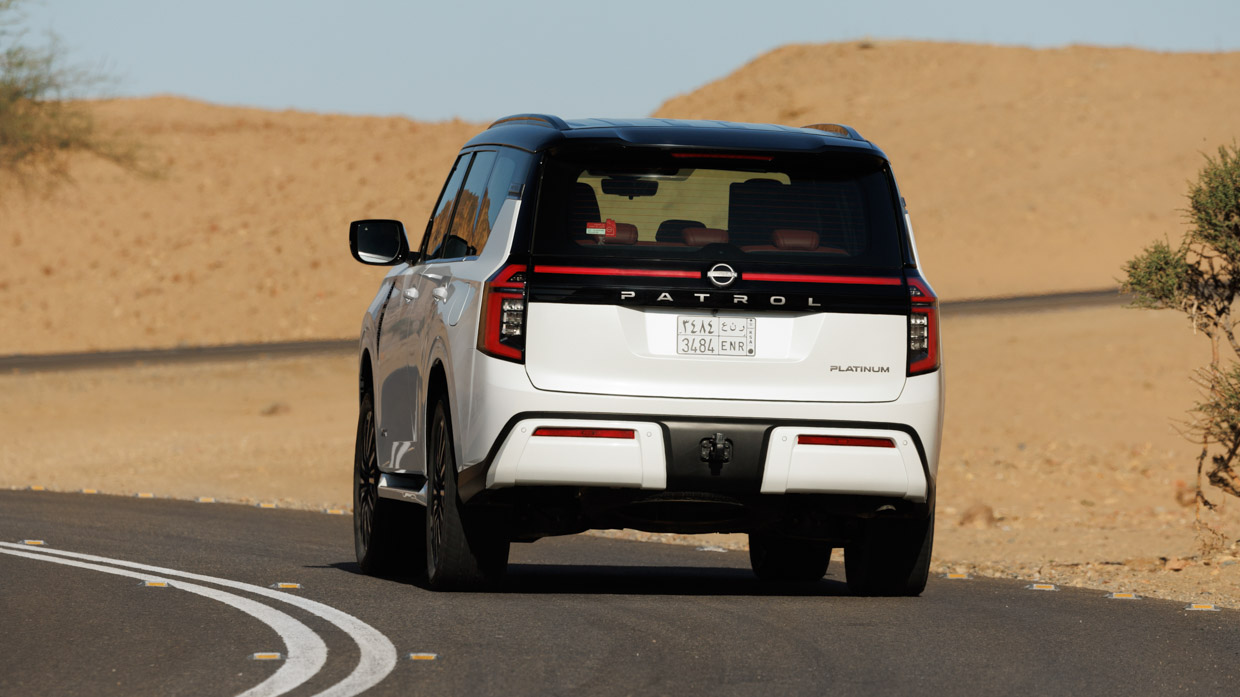
By contrast, extracting performance from the Y62’s V8 meant heavy throttle applications. It sounded superb at high revs, and delivered a brisk 7.1-second 0–100km/h sprint, but the Y63 is even quicker with overseas testing suggesting a circa-6.5-second claim.
The Y63 retains body-on-frame construction, preserving off-road chops with 244mm ground clearance as standard. A Premcar-fettled Warrior could be on the cards following the success of the Australian partnership, though ordinary Y63s are bush-ready with low range and a rear locker.
The chassis is not all-new, with an evolution of the Y62’s F-platform ladder frame carried over. Changes include new suspension geometry, enlarged dimensions, along with the ability to support sophisticated assisted driving technology, electric power steering, and possibly electrified powertrains in future.
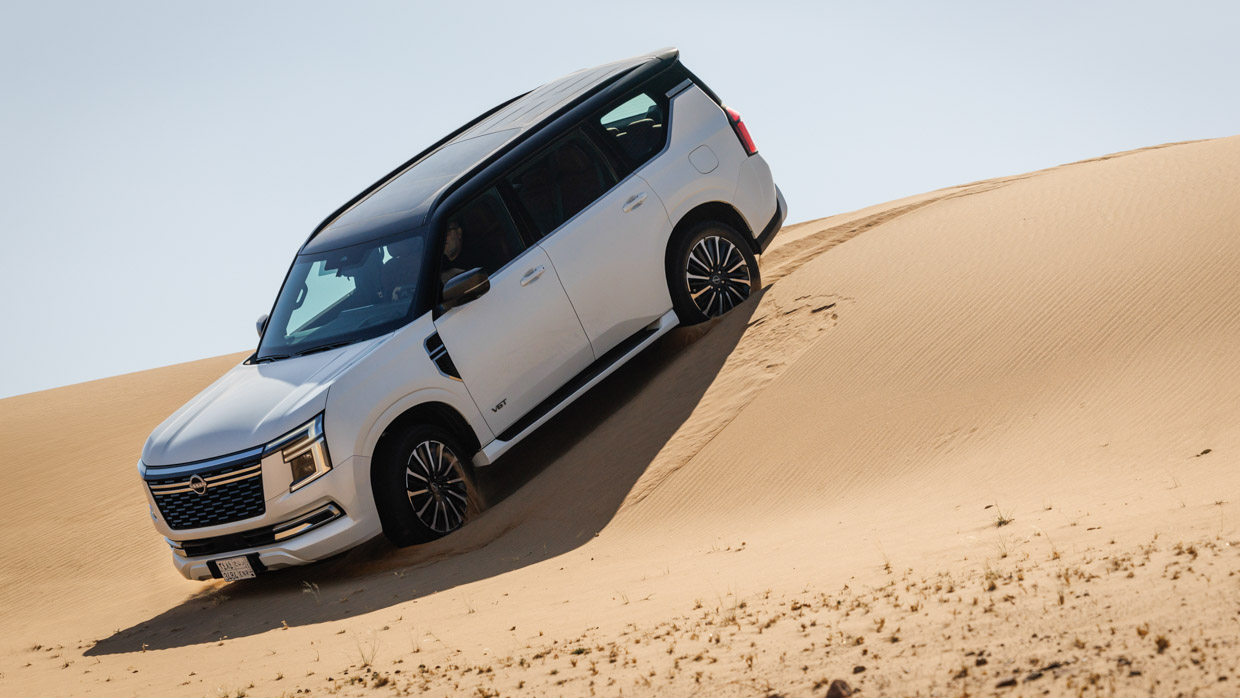
Especially impressive is the Patrol’s mile-slaying highway demeanour.
The calibration of the ProPilot adaptive safety systems easily eclipses the equivalent tech in the 300 Series; the Nissan has highly accurate adaptive cruise and lane-centring posture. Occupants sit high in the cabin with a clear view from large windows.
Upper-spec Patrol variants now feature adaptive air suspension, though our test vehicle rode on standard coils with Tokico frequency-sensitive dampers and 20-inch wheels. Ride comfort was resolved, with only occasional cabin flutter betraying ladder-frame underpinnings.
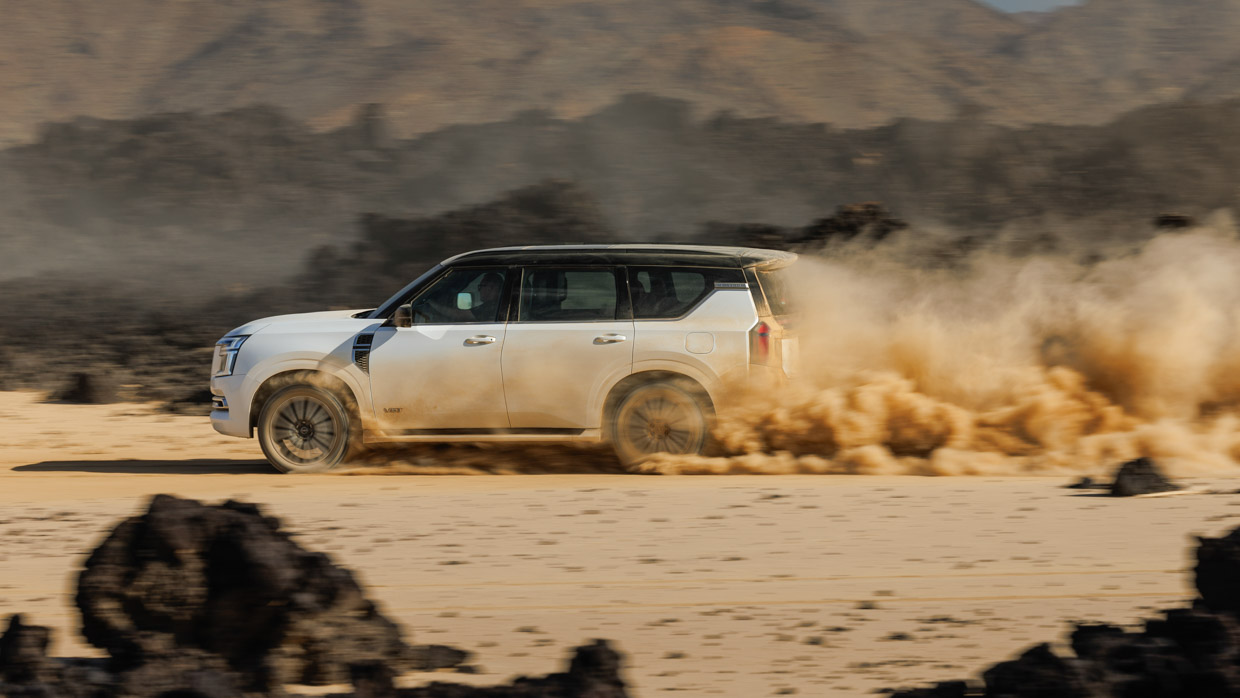
We expect the coil spring/20-inch combination for the next-generation Patrol Ti entry grade, while the Ti-L might adopt the adaptive air/22-inch machine-cut alloy wheel spec seen in top-shelf Mideast trims. American buyers can also select a rugged Pro-4X spec on 20s and all-terrain tyres.
The outgoing Patrol’s cross-linked Hydraulic Body Motion Control (HBMC) system provided solid body control when pressed, and allowed decent off-road articulation in standard form. However, the Y62’s outright handling capability was compromised by slow steering and middling tyre grip.
For the Y63, Nissan has introduced a second generation of HBMC, rather than reverting to conventional anti-roll bars sometimes found in this class.
The core principle remains — using hydraulically linked dampers to control body roll — but the system has been retuned for the Y63’s updated suspension geometry, mass, and dimensions.
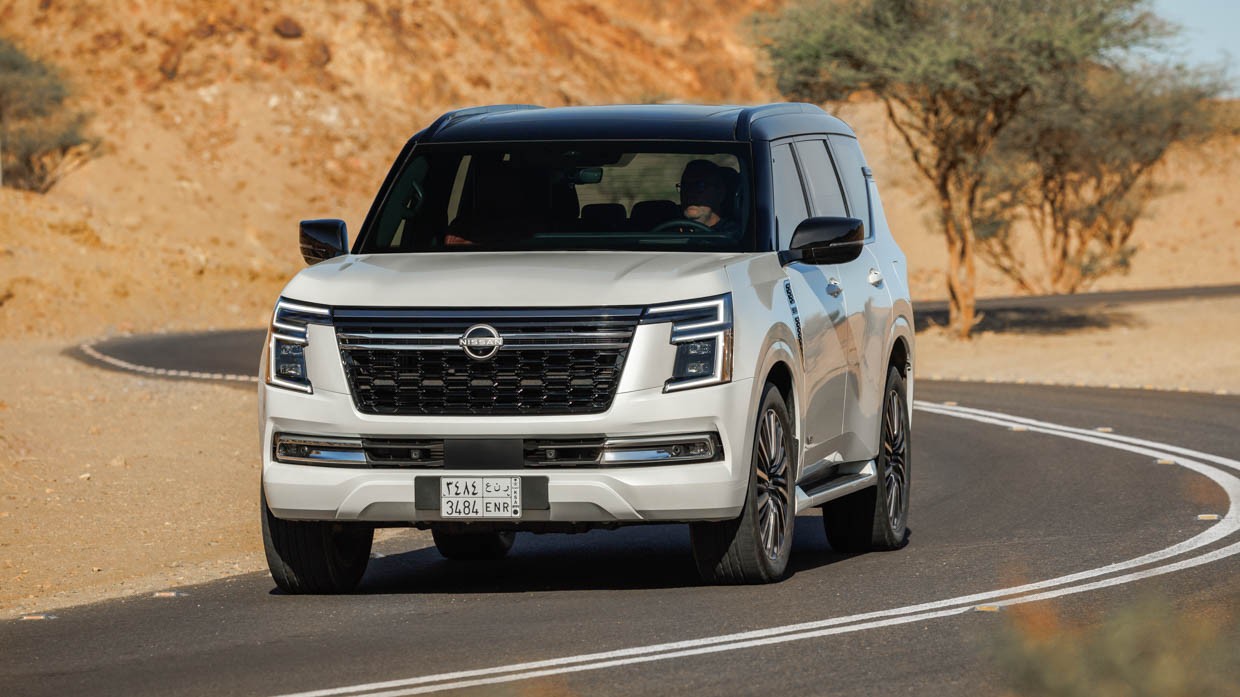
The new Patrol keeps body roll in check, confirmed by our attacking of several curving highway on-ramps at speed — rare corners in the dead-flat UAE. What has changed is the Patrol’s steering: the Y63 moves to electric assistance for the first time in the model’s history, and the added precision is immediately noticeable.
In real-world conditions, the new Patrol feels more luxurious and composed, a marked improvement over the loose Y62. Nissan appears to have benchmarked both Toyota and Lexus 300 Series iterations.
In fact, our first impressions suggest the Y63 could outpoint the 300 Series in both comfort and composure, but a back-to-back test in Australia will provide definitive answers.
While the old Patrol V8 was fast and fun, it could get thirsty. Surprisingly, the new twin-turbo V6 does not appear to be considerably more efficient. Our testing in Dubai’s 43-degree heat (with cold air-con) saw fuel economy settle around 14.5L/100km in urban driving, and 10.0L/100km on the highway at 110km/h.
Official Australian fuel economy stats for the Y63 are not known yet but American government data paints a picture of how modest the fuel consumption improvement over the V8 appears to be.
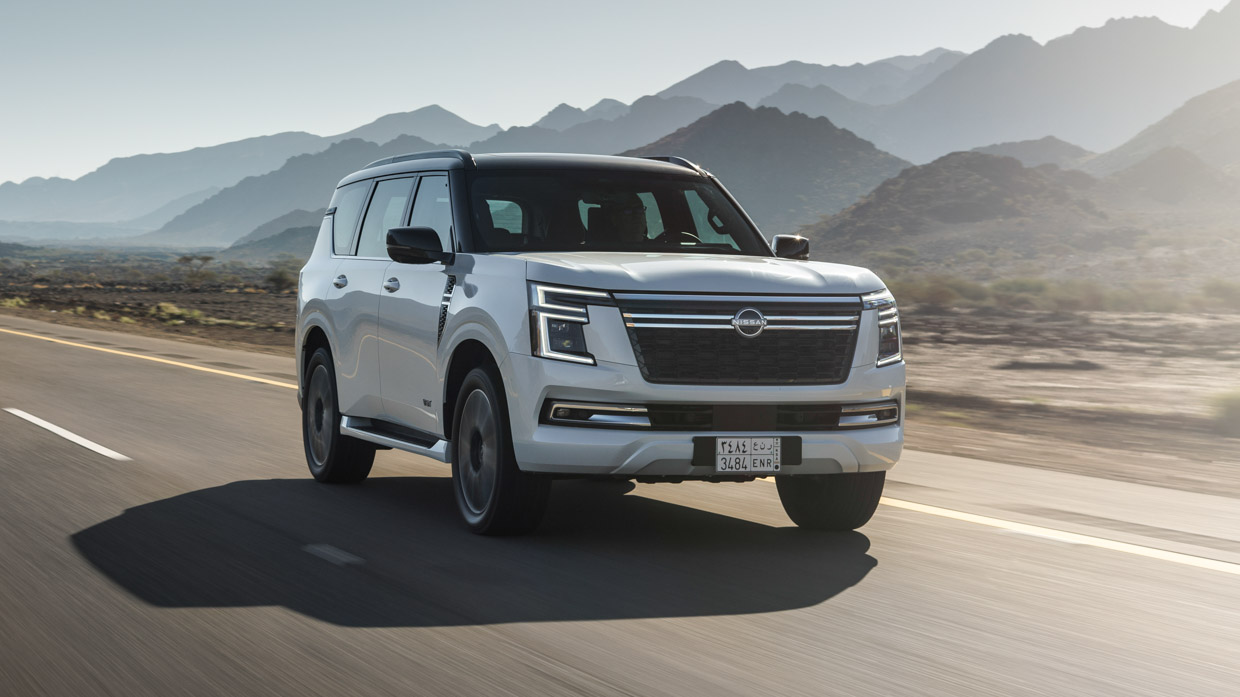
On debut, Nissan claimed the Y63’s twin-turbo V6 would deliver about a 24 percent improvement in fuel consumption. United States Environmental Protection Agency (EPA) data comparing Y62 V8 to Y63 V6 suggests a smaller 12 percent improvement: 13.8L/100km for the Y63’s 3.5-litre turbo V6, versus 15.7L/100km for the Y62’s 5.6-litre V8.
If the American data is reflected in Australia, the Y63’s combined ADR consumption will land around 12.7L/100km, down from 14.4L/100km for the Y62.
That is a slim gain that would save the average Aussie owner around $500 per year at the pump. With no diesel or hybrid Patrol on the official roadmap, the Y63 remains a thirstier proposition than a Land Cruiser in similar conditions.
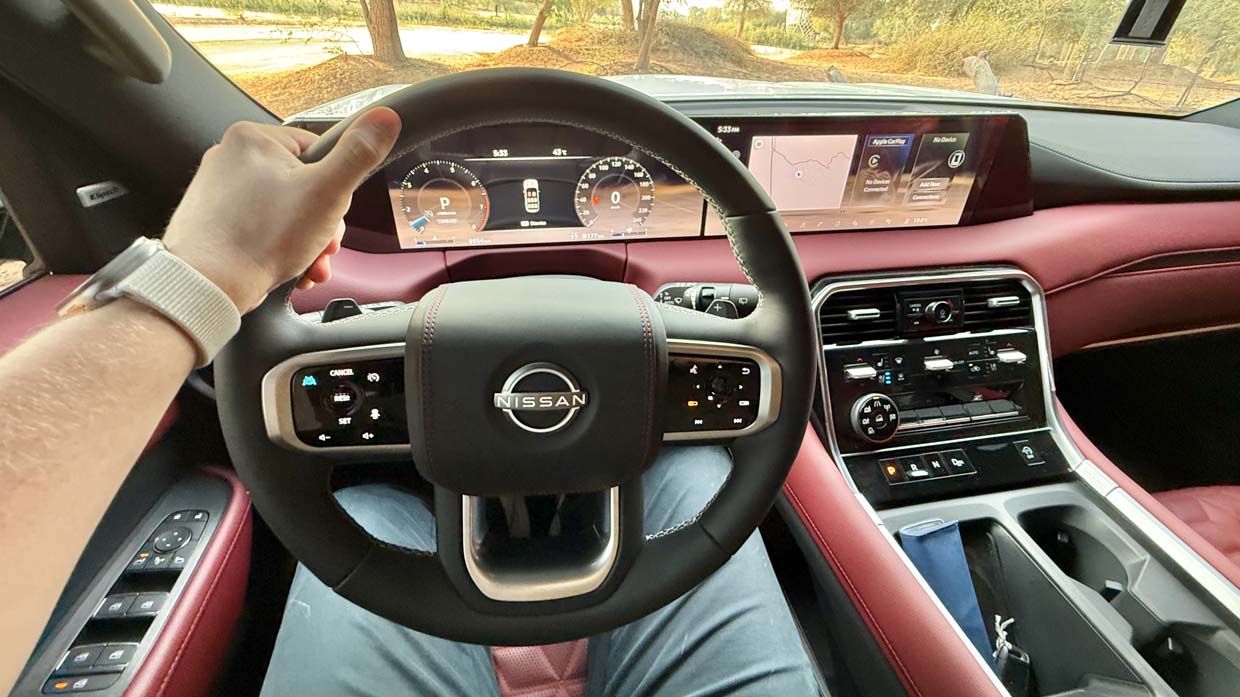
Further, the Y63 Patrol’s touring range is decreased compared to the Y62. While fuel economy is improved, tank capacity is reduced from 140 litres to just 97 litres. Based on our highway test figure of 10.0L/100km, that translates to 970km of real-world range.
There’s also the matter of emissions — an issue burbling under the surface locally. The Y63’s hefty CO2 (possibly around 290g/km) will be a headache for Nissan under Australia’s NVES rules.

The company may need to offset the Patrol’s emissions with hybrid and EV sales, or increase pricing to compensate for NVES penalties.
Chasing Cars understands that Nissan is trying to adapt its e-Power hybrid system for use in the Y63. In the X-Trail midsize SUV, e-Power improves fuel efficiency by about 22 percent; if a similar saving could be achieved in the Patrol, a hybrid version could return high single-digit petrol consumption.
Or should you buy a Y62 now: that is the $100,000 question — and our answer depends on your purchase timeframe.
If you’re planning to upgrade to a new large 4WD in 2025, it’s hard to look past the ‘runout’ Y62 Patrol with its 5.6-litre V8. It’s the more charismatic engine, and with a circa-30 percent discount when compared to an equivalent Land Cruiser 300 Series, the old-but-gold Nissan offers hip-pocket appeal.

Pair the V8’s desirability with Nissan’s decision to endow the final Y62s for Australia with a semi-modern interior featuring smartphone mirroring, and you’ve got a recipe for a compelling buy. Its dynamics still hold up and its off-road ability is impressive.
But if you’ve got time on your side, or if you reckon even the final-series Y62 cabin feels too dated by 2025 standards, then the Y63 could be worth holding out for. It looks, feels and drives like a far newer vehicle… because it is.
The Y63 may not have a V8, but its punchier six-cylinder engine is more tractable, the steering is superior, and the high-quality, well-sorted cabin moves the new Patrol ahead of its predecessor by a considerable margin.
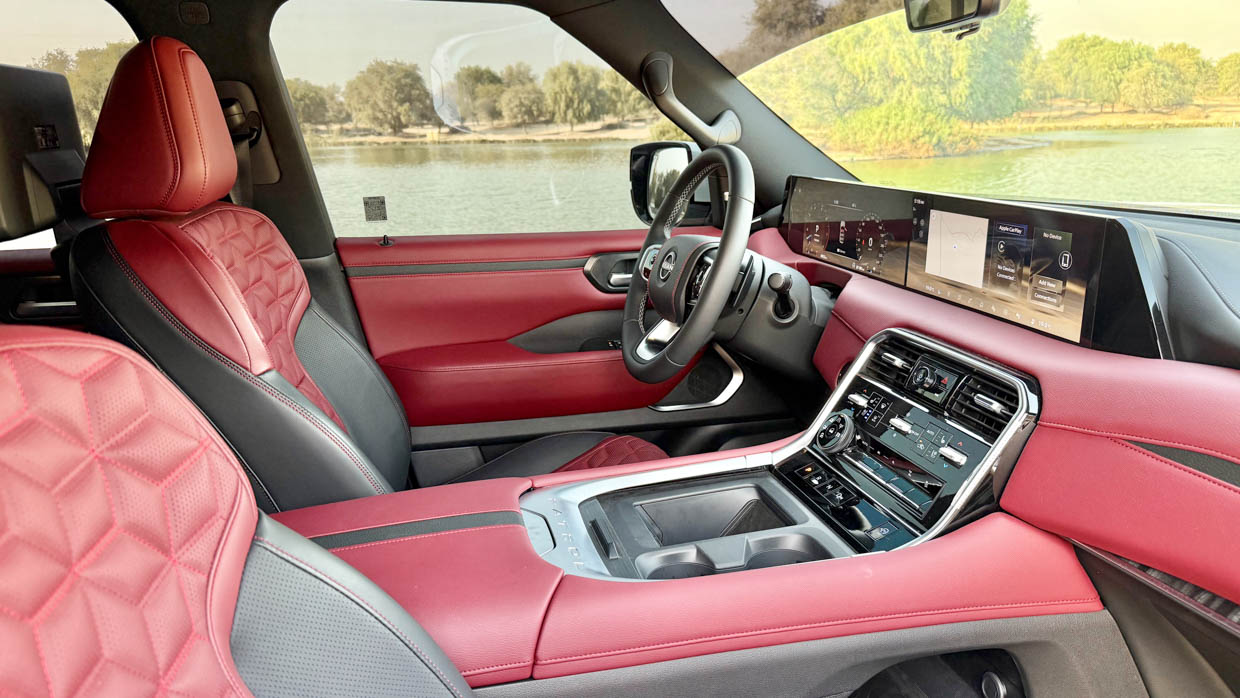
We’d hoped for a bigger fuel efficiency gain downsizing from the V8 to a twin-turbo six’. Nissan’s reluctance to offer a more efficient engine (whether that be a diesel or a hybrid Patrol) increases fuel costs for owners and aggravates the problem of costly NVES penalties for the brand in Australia.
Then there is the open question of the Y63 Patrol’s price in Australia. The Y62 remains a bargain, but if Nissan Australia can limit price hikes for the Y63 to the 10–15 percent seen in the Middle East, the numbers could still stack up when compared to a Land Cruiser.
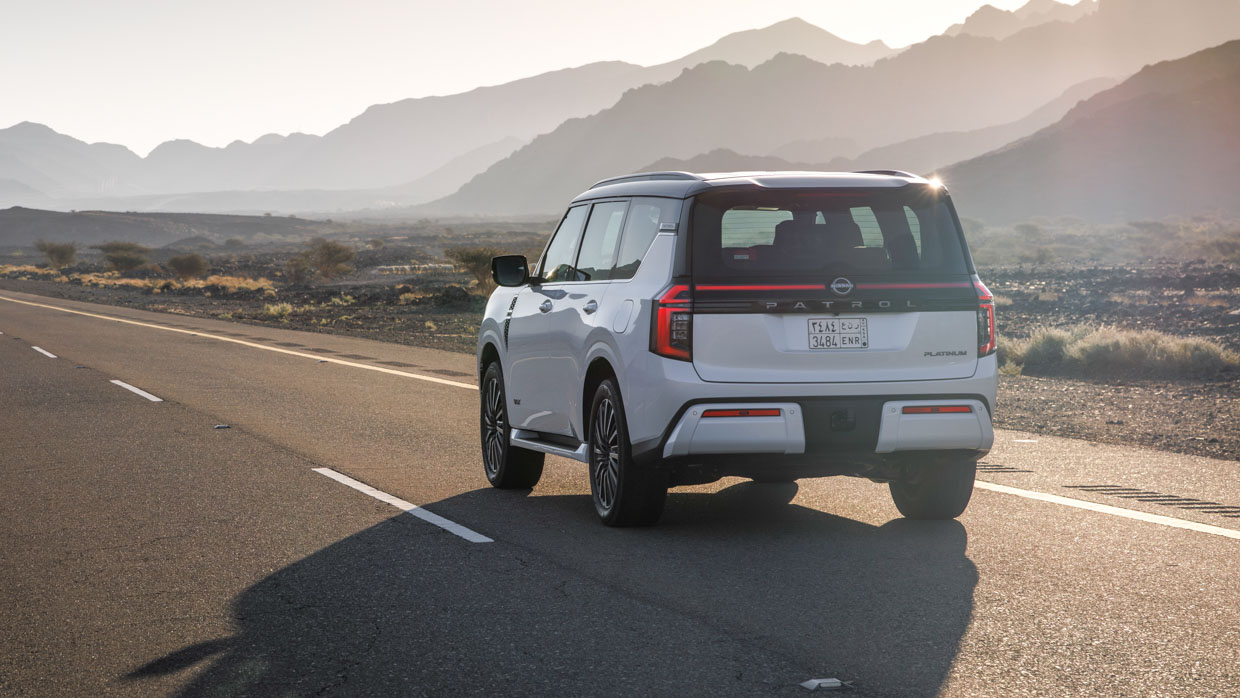
If the new Patrol’s price creeps close to Land Cruiser 300 territory, the appeal of the Toyota’s diesel six-cylinder could lure buyers away.
Many unknowns remain. While first impressions were very solid, Chasing Cars will reserve final judgment on the Y63 Patrol until we can drive various examples of the vehicle on home turf — in 2026, we expect.
About Chasing cars
Chasing Cars reviews are 100% independent.
Because we are powered by Budget Direct Insurance, we don’t receive advertising or sales revenue from car manufacturers.
We’re truly independent – giving you Australia’s best car reviews.
The estimate provided does not take into account your personal circumstances but is intended to give a general indication of the cost of insurance, in order to obtain a complete quote, please visit www.budgetdirect.com.au. Estimate includes 15%^ online discount.
^Conditions Apply
Budget Direct Insurance arranged by Auto & General Services Pty Ltd ACN 003 617 909(AGS) AFSL 241 411, for and on behalf of the insurer, Auto & General Insurance Company Limited(ABN 42 111 586 353, AFSL 285 571).Because we don’t know your financial needs, we can’t advise you if this insurance will suit you. You should consider your needs and the Product Disclosure Statement before making a decision to buy insurance. Terms and conditions apply.
Indicative quote based on assumptions including postcode , 40 year old male with no offences, licence suspensions or claims in the last 5 years, a NCD Rating 1 and no younger drivers listed. White car, driven up to 10,000kms a year, unfinanced, with no modifications, factory options and/or non-standard accessories, private use only and garaged at night.
^Online Discounts Terms & Conditions
1. Discounts apply to the premium paid for a new Budget Direct Gold Comprehensive Car Insurance, Third Party Property Only or Third Party Property, Fire & Theft Insurance policy initiated online on or after 29 March 2017. Discounts do not apply to optional Roadside Assistance.
2. Discounts do not apply to any renewal offer of insurance.
3. Discounts only apply to the insurance portion of the premium. Discounts are applied before government charges, taxes, levies and fees, including instalment processing fees (as applicable). The full extent of discounts may therefore be impacted.
4. We reserve the right to change the offer without notice.